- Back to Home »
- AMAZING Design , Architectural DESIGN »
- Brilliant Recycled Buildings ... & it's AMAZING 1
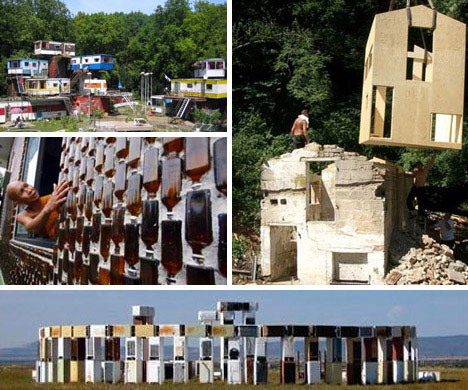

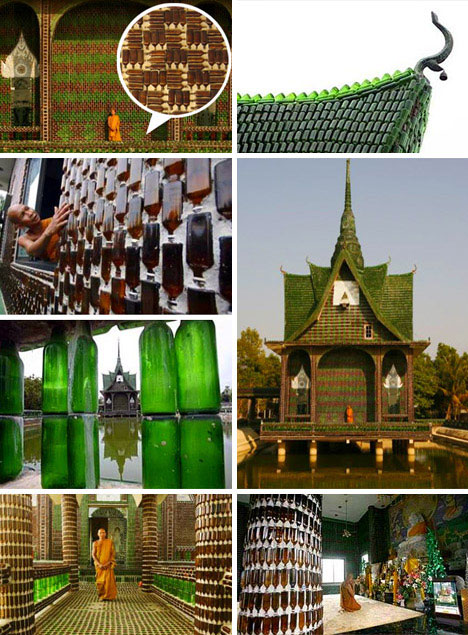
What can a group of rural monks hundreds of miles outside of Bangkok do to help the environment and build a beautiful temple all in a single stroke of architectural genius? Local residents helped these religious devotees collect over a million colored glass bottles that were then used to create everything outside and within the monastic complex - from the walls and roofs to the decorative interior mosaics of this amazing building of worship and meditation. Glistening in the light and arranged in patterns one would hardly know from a distance that the structure was built from anything but the finest of custom-made materials. (Source)
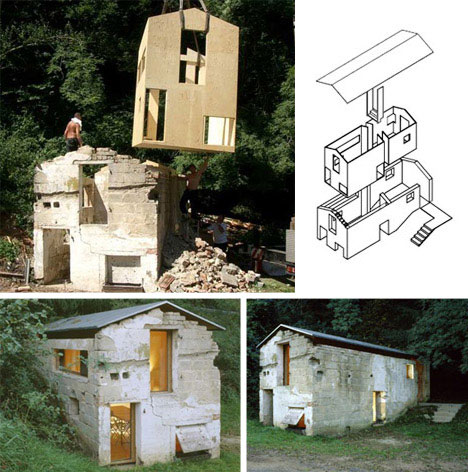
A dilapidated pig sty is probably the last place anyone would thing to put a brand new home. However, there is something immediately compelling about the juxtaposition of an old aged shell and a starkly modern interior box that makes this hybrid of old and new immediately more engaging to the eye. The sty portion dates back hundreds of years and sustained age damage over that time and then was nearly destroyed during the Second World War. Restoring the building would have been difficult and cost-prohibitive so the architects came up with a brilliant work-around: they simply inserted a brand new building into the shell of the old one and lined up the windows and openings with the existing perforations in the shell of the sty. (Source)
Recycled Trailer Theatrical Set Design
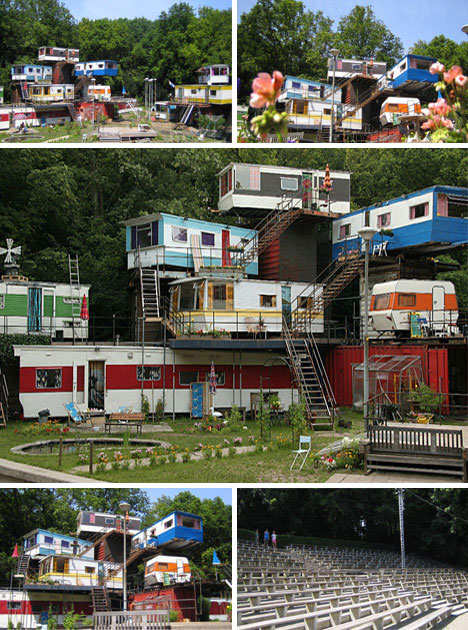
Images of this building have long made their way around the internet, often calling it the ‘Redneck Mansion’ for lack of knowledge about its actual origins. In point of fact, this is an elaborate theater set for a showing of the Anton Chekov play Ivanov in Amsterdam. The original confusion came in part from partial sets of these images circulating the web in which the shots of the audience area were omitted. So, what would appear to be incredible backwater innovation is in fact a calculated piece of theatrical construction - though that revelation in no way detracts from the strange beauty of this elaborate recycled set design. (Source)
Stonefridge the Recycled Fringe Henge
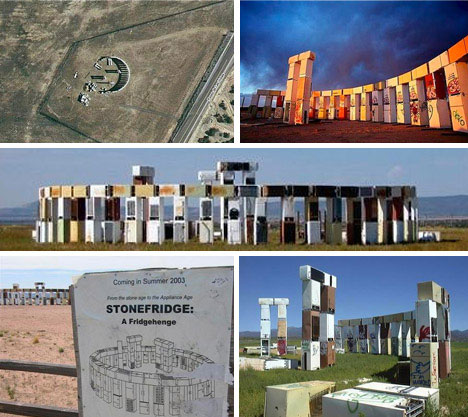
Stonefridge, as it is aptly name by its creator, is a fridge henge - a version of stone henge created entirely out of used refrigerators and set in the barren semi-desert landscape of New Mexico on the edge of Santa Fe.. Refrigerators of all colors, shapes, sizes and vintages stand on top of one another and stack to a height of nearly twenty feet and a hundred-foot diameter circle. It is an “anti-monument” to American waste and is aligned not with solar, lunar or stellar phenomena as the original Stonehenge but rather with the infamous historic atomic explosions of Los Alamos. (Source)
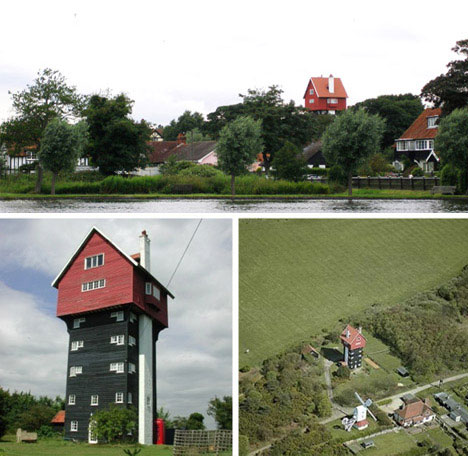
This one has a very very history so follow closely: this actually was a water tower that was originally designed to look like a house on top. After the water tower was decommissioned as such nearly a century later the top part was converted into an actual house - though it always looked like one. An exhilarating (or exhausting) walk takes its proud new owners to the absolute best view in the neighborhood - from the inside of what was once a thirty thousand gallon water tank!
Airplane Hangar to Water Park Conversion
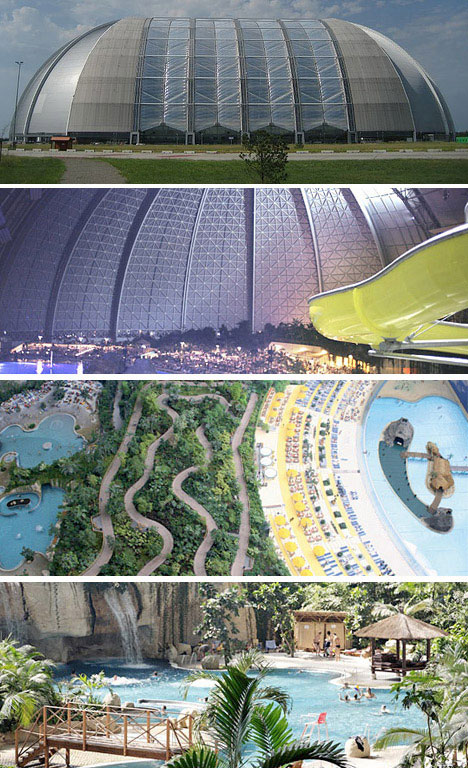
A giant space is often the most difficult to reuse. Small spaces can be opened up and repartitioned to create variously sized places for residential and commercial functions but something on the scale of an entire airplane hangar? What better use, then, for a beautiful and vast interior volume like this than a fully functional water park complete with sand beaches, forest walks, water slides and guest residences? All of these fit comfortably into the 600 by 1000 foot floor space and under the 300 foot ceilings of this hangar near Berlin, Germany - complete with fake birds chirping in the background.
High Line Railroad to City Park Conversion
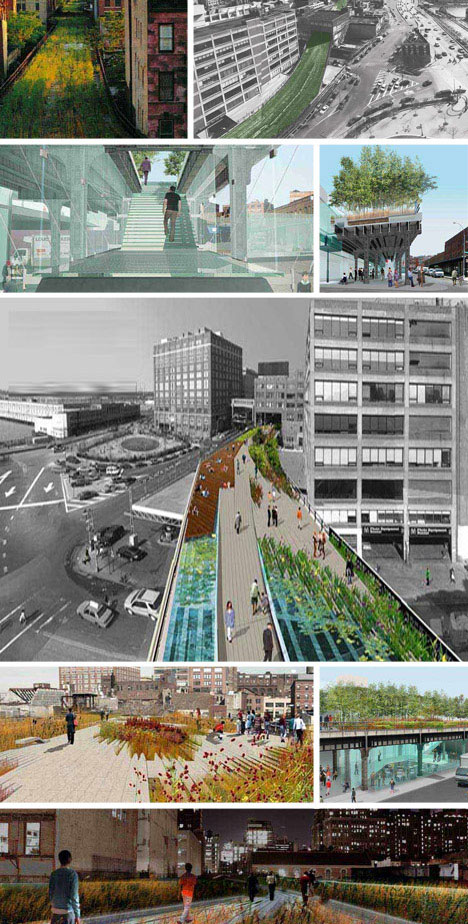
The people of New York City have long loved the derelict High Line rail structure, long inoperative, that floats along above the streets of Manhattan for over a mile on the Lower East Side. When the city made plans to destroy it citizen action groups sprang to attention, raised funds and eventually made plans to have it saved and converted into a public park. After a rigorous competition between top-notch architects from around the world the above concept design was decided upon and construction is now underway for a gorgeous long elevated park that will provide visitors with a lofted view as they walk through the city.
Adaptive Reuse of Garage as House
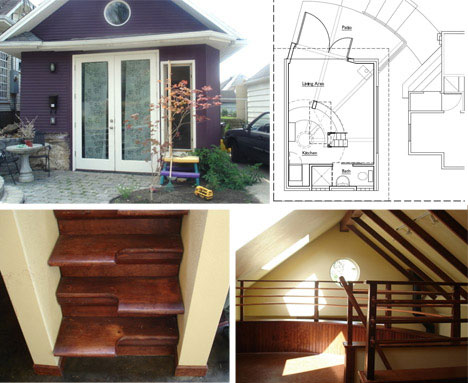
The garage is typically the least hospitable part of or attachment to a house - small and cold with undifferentiated floor plans and concrete floors are the norm for such spaces. However, a Portland architect worked hard for city approval and finally was able to turn a garage into not just a house but a living place with clever tricks for making the most interesting and functional uses of available spaces as possible. (Source)
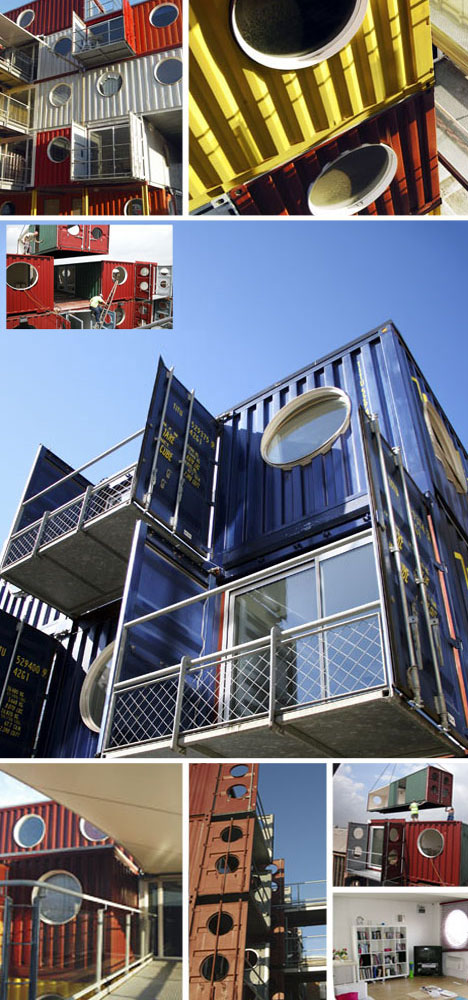
The Container City system is a way of building, a modular container-based approach to residential and commercial architecture that takes advantage of the versatility of containers as building blocks - units that can be arranged and modified to accommodate diverse functions and create delightful wholes out of myriad smaller parts. The results are impressively diverse - from austere and functional offices to playful and colorful homes. (Source)
Transforming Cargo Container Home Module
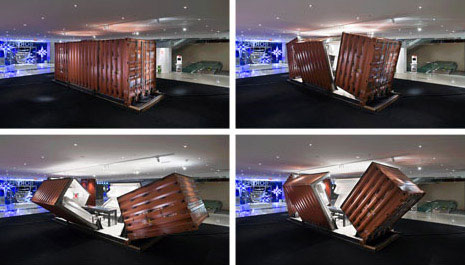
A simple push of a button transforms this apparently bland cargo container into a working - if small - living space. It comes complete with built-in couches and bedroom furniture as well as the basic daily necessities such as a bathroom and kitchen - all around a simply amazing little shipping container home-on-the-go.
Shipping Container Office and Shop Tower
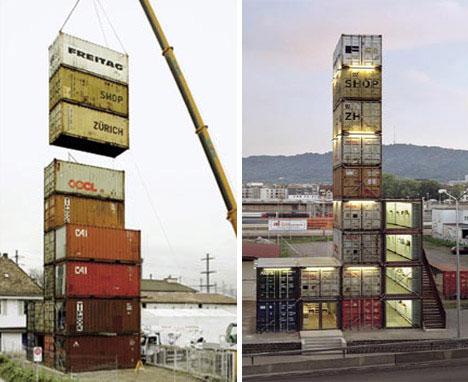
In a brilliant move to reinforce their brand (as a company that produces lovely faded-color bags from recycled materials) this German manufacturer chose to build a somehow beautifully industrial office and store tower completely from stacked shipping containers. This of course also helps them save on construction costs and make a bold statement on the skyline in addition to using recycled materials on their buildings as they do on their bags - a wonderful synthesis of design, sustainability and branding all around.
Creative Shipping Container Playground Design
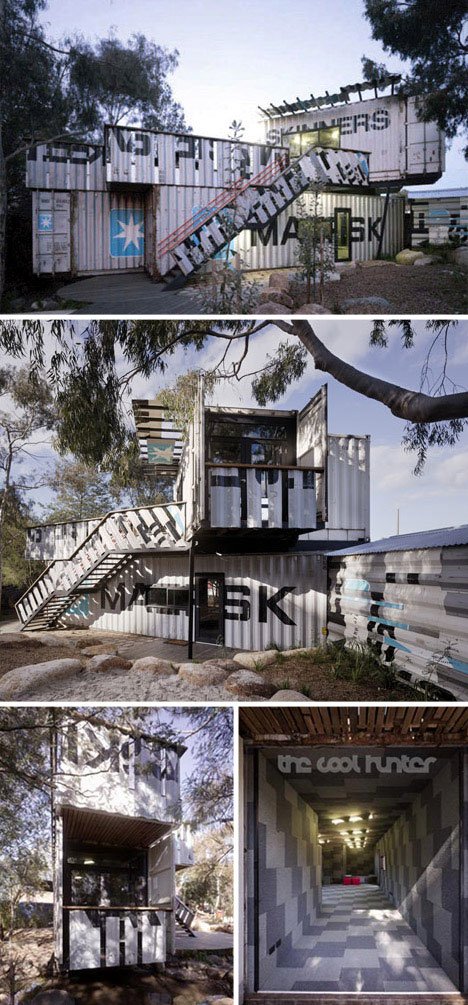
Shipping containers are probably the last place most people would want their children to play - with one exception. By bending and transforming pieces of these containers cleverly fitting stairs and aesthetically connected shades are created, balconies and other architectural features are all rendered in the same material language that informs the entire composition. All in all this illustrates the amazingly varied possibilities of designing even within the seemingly limited palette of a set of rectangular metal boxes. (Source)
Cleverly Camouflaged Cargo Container Home
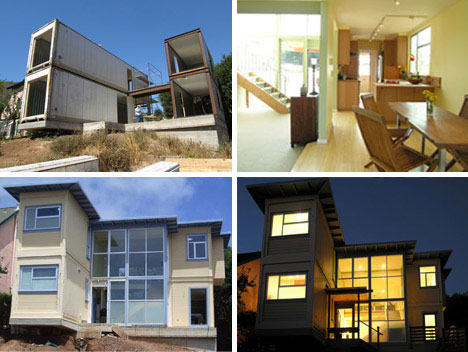
While some shipping container home designs are built to accentuate the presence of these once-industrial units that form their structural core others take the exact opposite approach and attempt to disguise or entirely hide the presence of the underlying cargo container core. This house is a fascinating example of that latter approach in which the finish product bears almost no signs of what it was constructed from. Architectural critics might see this as distastefully untrue to the building’s origins but if it gets homeowners using recycled rather than new raw materials that, at least, is admirable in its own right. (Source)
Giant Cargo Container Hotel Building
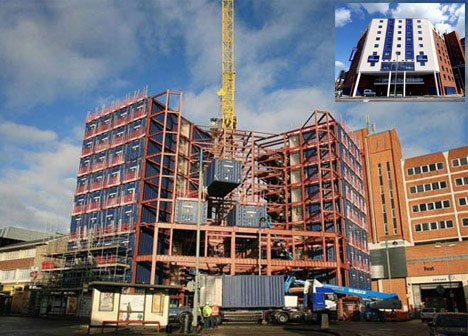
This huge cargo container hotel building seems like it missed a critical opportunity to express the basis of its construction in its final aesthetic appearance. The outside, once covered, resembles another dull stucco-and-brick hotel like any other. The insides are far more interesting - each shipping container was pre-fitted with drywall, bathrooms and other basics before being shipped to the United Kingdom for assembly after being constructed in China. While this design does open up new possibilities for quick-constructed temporary festival and event housing it could be more expressive of its origins on its surface. (Source)
2 b cointinue..........













Post a Comment